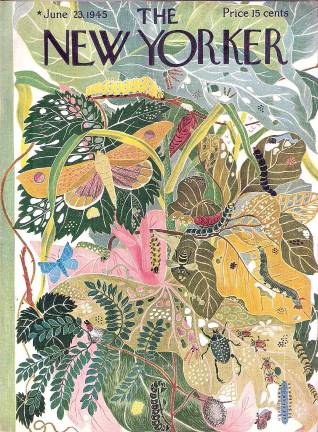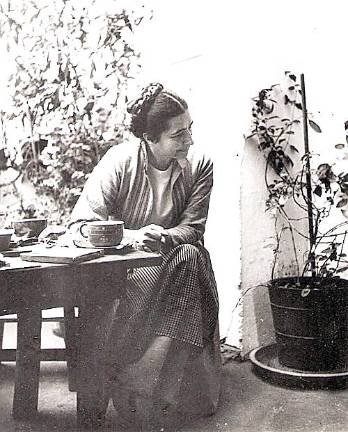The most modern of the modern artists
Warwick. The Amity Gallery to host exhibit of the works of pioneering artist and designer Ilonka Karasz, beginning this weekend.


The designer Ilonka Karasz (1896-1981) is probably best known for her many covers for The New Yorker magazine. She created 186 covers over five decades, from 1925, shortly after the magazine first started publication, until her last cover in 1973.
That was the second most of any artist in the magazine's history.
Less known, however, is the fact that she was one of a handful of pioneering artists and designers who worked to bring a modern aesthetic to the decorative and applied arts in the early years of the twentieth century.
The wife of Willem Nyland, founder of the Chardavogne Barn in Warwick, she is the subject of a new exhibit at the Amity Gallery.
Born in Hungary in 1896, she studied art at the Royal School of Arts and Crafts in Budapest, the first woman to be admitted.
She came to New York in 1913 and quickly established herself as an artist of note with her bold and colorful designs, influenced in part by her exposure to the ideas of the Wiener Werkstatte in Vienna and the peasant art of Hungary.
Together with other European emigres, she worked to encourage the growth of Modernism in America, with an emphasis on the applied arts rather than the fine arts.
She won renown for her work in a wide variety of fields, including textiles, furniture, ceramics, silver, printmaking, wallpaper and interior design, as well as magazine and book illustration.
Ilonka Karasz was among the most modern of the moderns, yet her artistic ideas were based on ancient principles. It is perhaps in her work with her students that these ideas can best be seen.
The exhibit at the Amity Gallery will give a brief overview of her career as well as provide examples of her teaching methods and samples of student projects.
The exhibition opens with a reception on Saturday, Oct. 5, from 5 to 7 p.m. and will continue through the month of October.